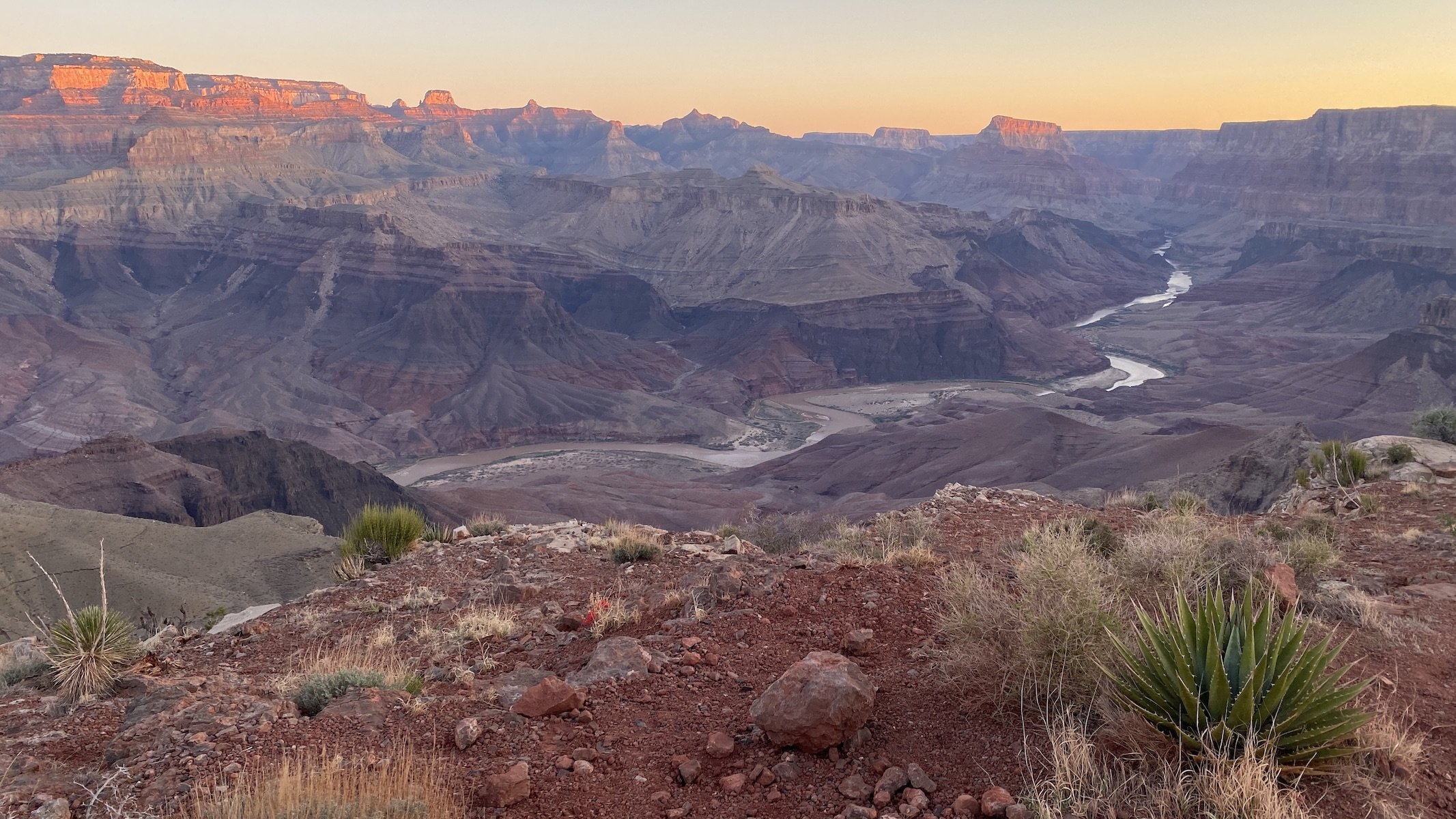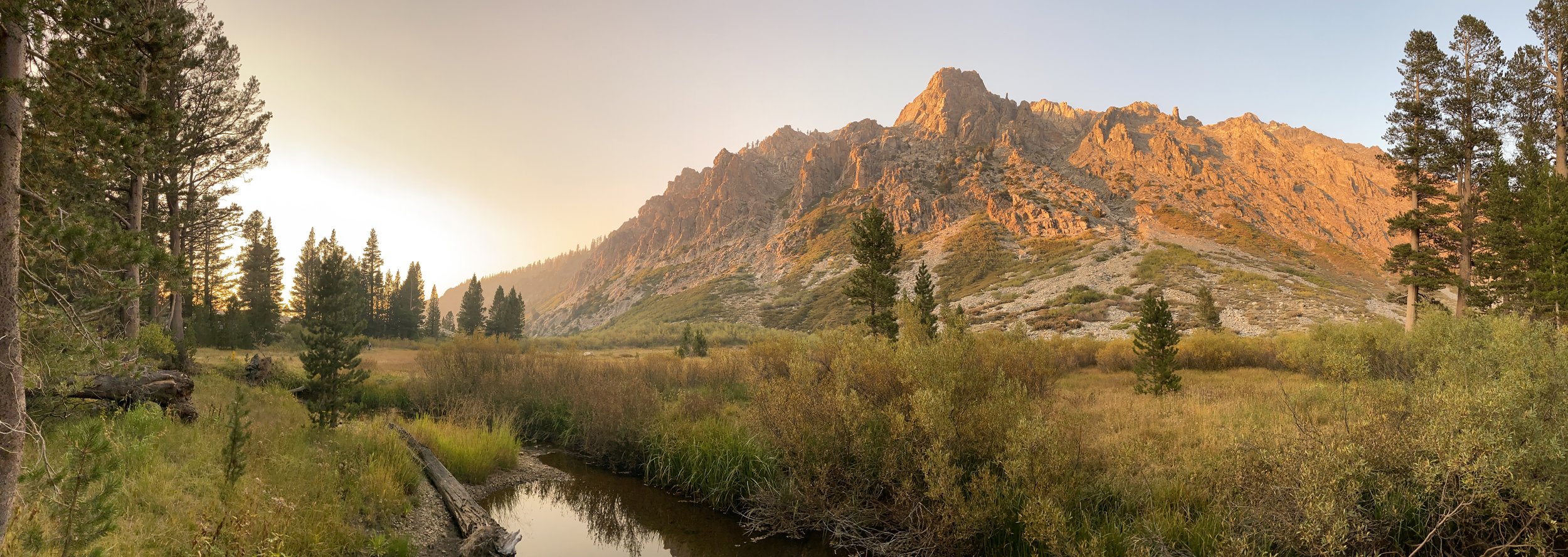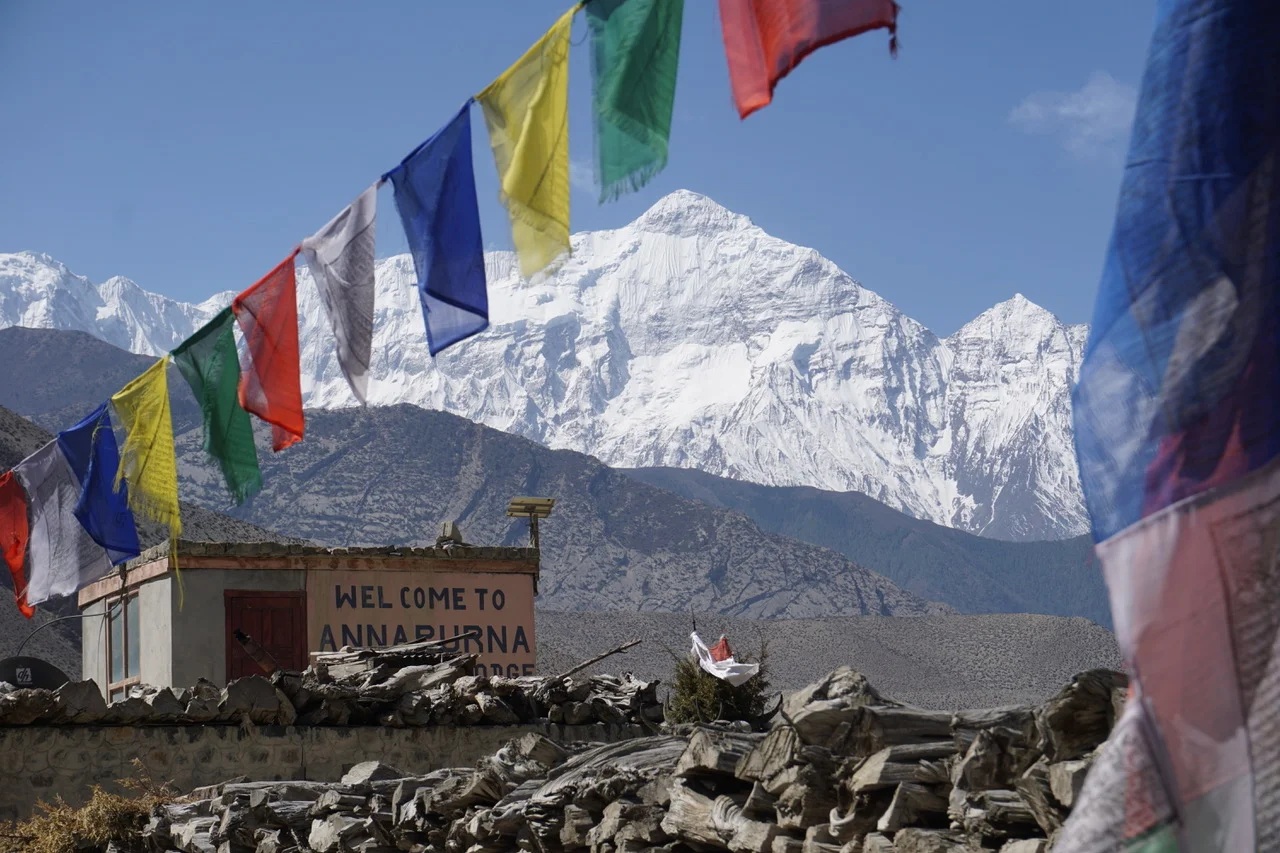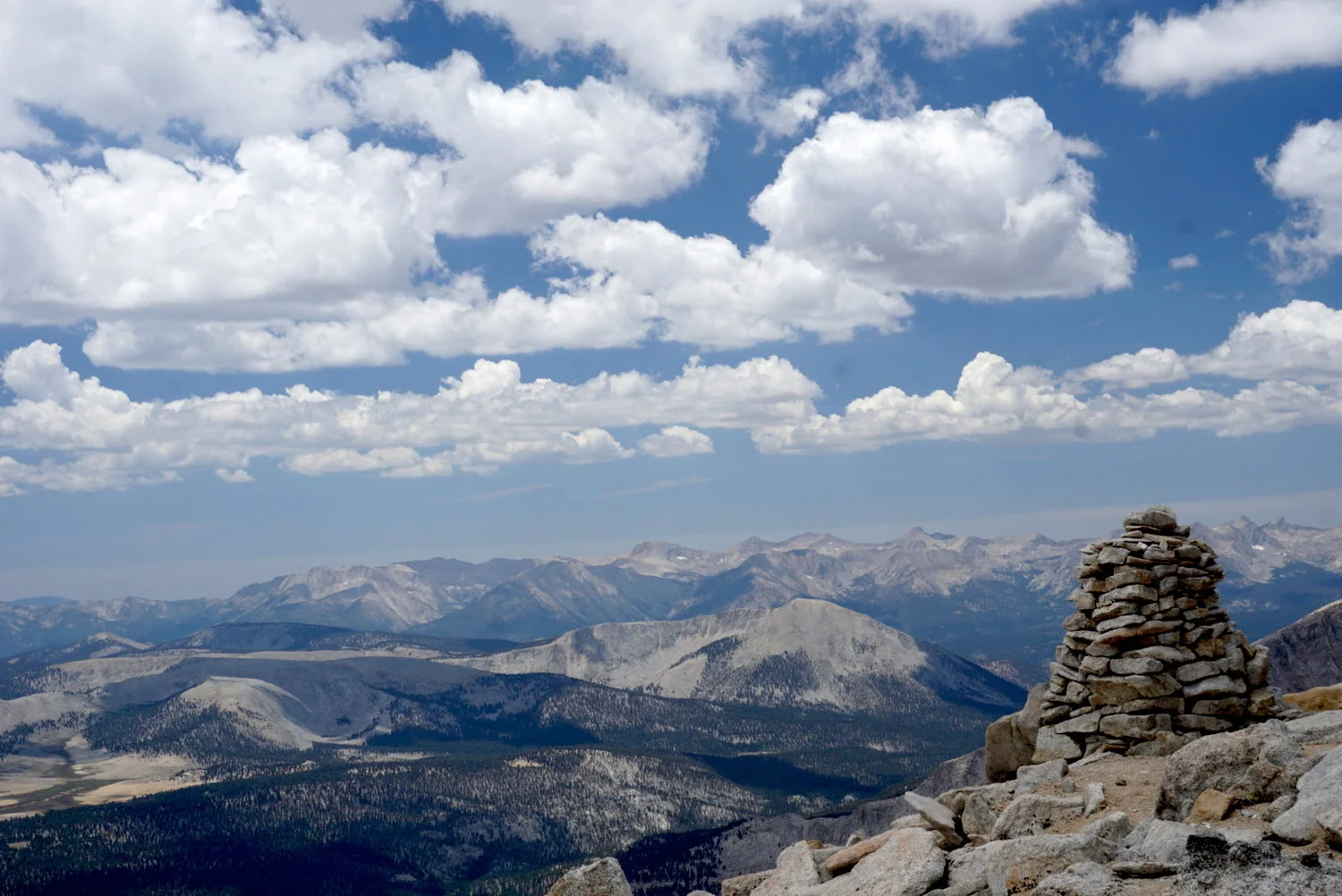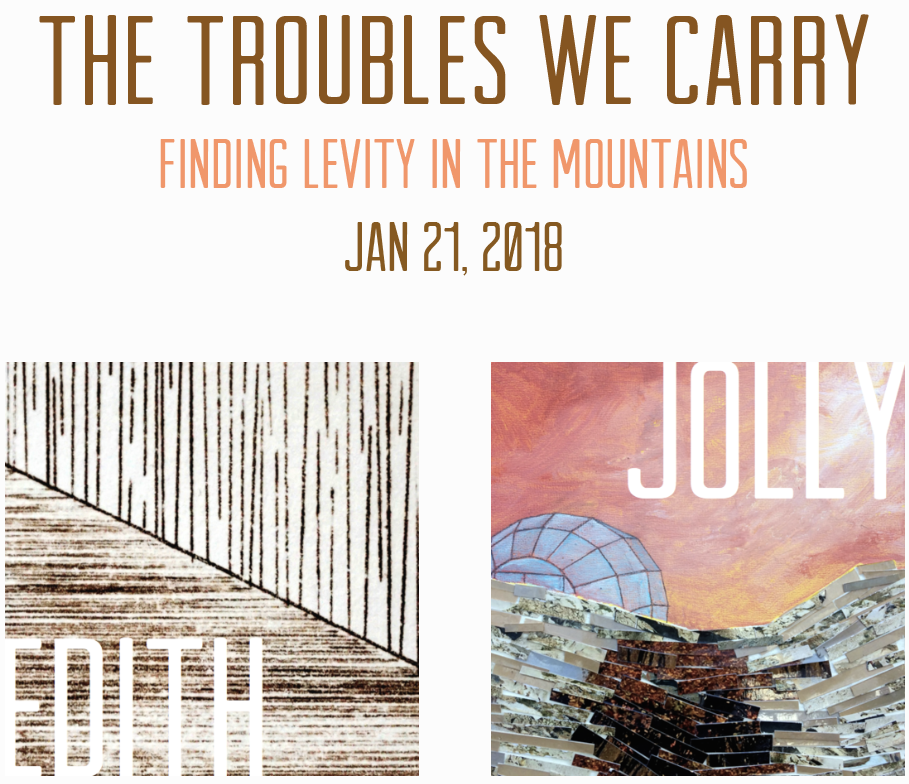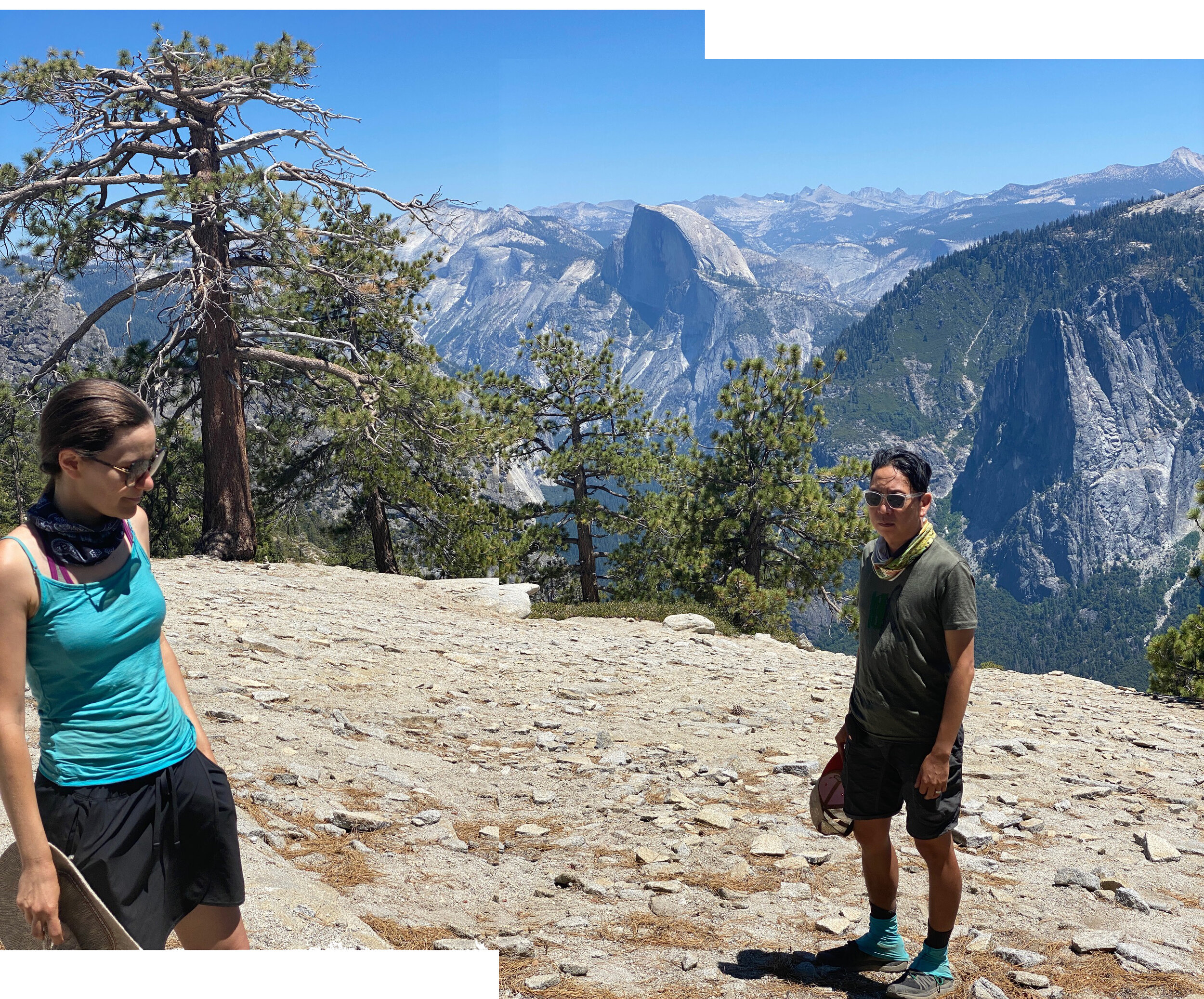This is an unusual year for everything, including (and perhaps especially) travel. With California under stay-at-home orders for the first few months of the COVID-19 pandemic, we stuck to day hiking near home and we visited many parts of the Angeles National Forest that we had never before explored, which led us to fall in love with LA and its roomy backyard all over again.
Just before the pandemic we secured wilderness permits for Yosemite, and to our surprise the National Park Service moved to honor existing permits during these strange time. But this good news did not automatically mean we were ready to take this trip. We weighed the pros and cons of traveling a few hundred miles from home during this precarious time, ultimately deciding that we would proceed with our travel plans if we could be reasonably assured that exposure risk would be low — from others to us and vice versa. We felt that our plan met this criteria. Each of our two chosen routes had the same starting and ending trailhead and are considered lightly-trafficked even during a normal year, meaning we could be self-reliant and self-contained without the need to take public transportation or use any resupply services, and without encountering very many people on the trail.
We proceeded with our plan and ended up having a unique experience in this unusual year. Yosemite was largely empty owing to the fact that only those with wilderness permits, lodging reservations, campground reservations, or day-use permits entry were allowed to enter. With only one campground open and plenty of folks canceling their trips, there were far fewer summer visitors than Yosemite is used to seeing, and less than we’ve ever experienced on past trips. Ironically, it was a great time to visit.
Grand Canyon of the Tuolumne
Of the many canyons and basins in Yosemite, this is the only one that earns the moniker “Grand Canyon“ — and for good reason. This route passes through a wide variety of geographies, topographies, and habitats in dramatic fashion, and if traveled clockwise (as we did), it reveals the Tuolumne River’s deep canyon through a lengthy descent that provides plenty of opportunities for ooh-ing and aah-ing. The adventure only gets better thereafter.
Day 1 : White Wolf to Pate Valley (11.7 mi)
White Wolf Lodge and Campground were closed due to the pandemic, as was the road that leads to them, so we started our hike about a mile away from the trailhead. We parked along Highway 120 and walked 1.1 miles to White Wolf. Once on the trail, the route follows pine forest for a fairly level section before starting a steady descent from just above 8,000 feet, down to Pate Valley at 4,200 feet — the lowest point along the entire route. Views into the Grand Canyon start to open up a few miles in, giving hikers a break from the lengthy and sometimes incessant descent through a stretch that we found to be rather dry and hot in this low-snow year. Along the descent, views to the west reveal Hetch Hetchy reservoir — Yosemite Valley’s famous “little sister” who was drowned in the 1920s due to dam construction to serve San Francisco with a reliable water supply, despite John Muir’s vehement opposition. Once at the bottom, the trail reaches the Tuolumne River. Following the river northeast for a few miles, we arrived at a bridged junction with Piute Creek, where we found some great options for making our home that night.















Day 2: Pate Valley to Waterwheel Falls (12.1 mi)
Leaving the bottom of the canyon, the trail begins its ascent as the canyon narrows into Muir Gorge. A treat awaits as the trail crosses Rodgers Creek — a beautiful chasm of vertical walls through which cool Sierra water seeps offers respite in a sanctuary-like space. Climbing on and still following the path of the mighty Tuolumne River, the vegetation changes from oak woodland to conifer forest. The canyon widens again past Muir Gorge, with views once more opening up and revealing the many verdant miles of canyon from which you just emerged. Reaching Waterwheel Falls at about 7,000 feet, we took a faint use trail down to find a forested flat adjacent to the river. No one else camped there that night.

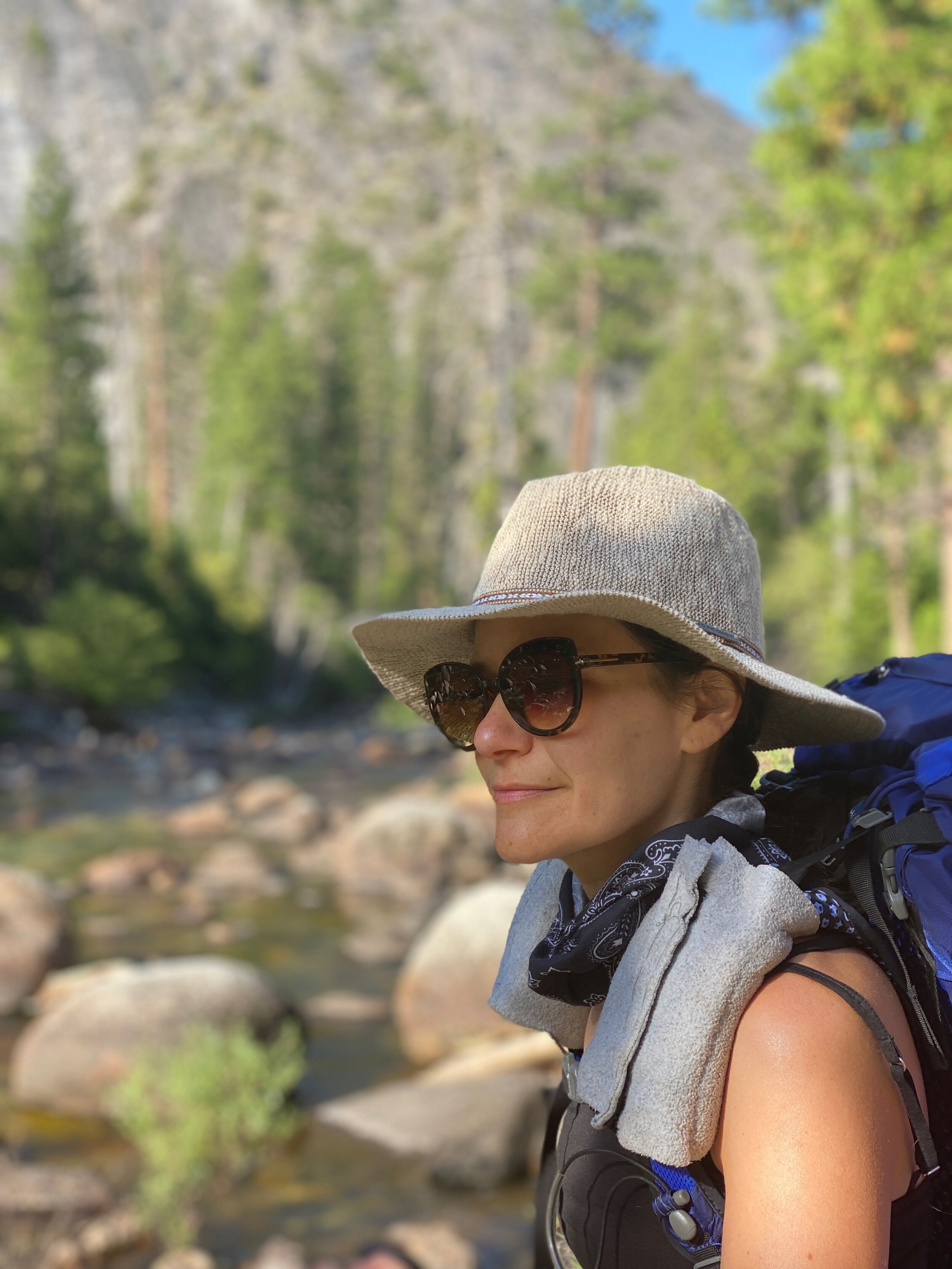
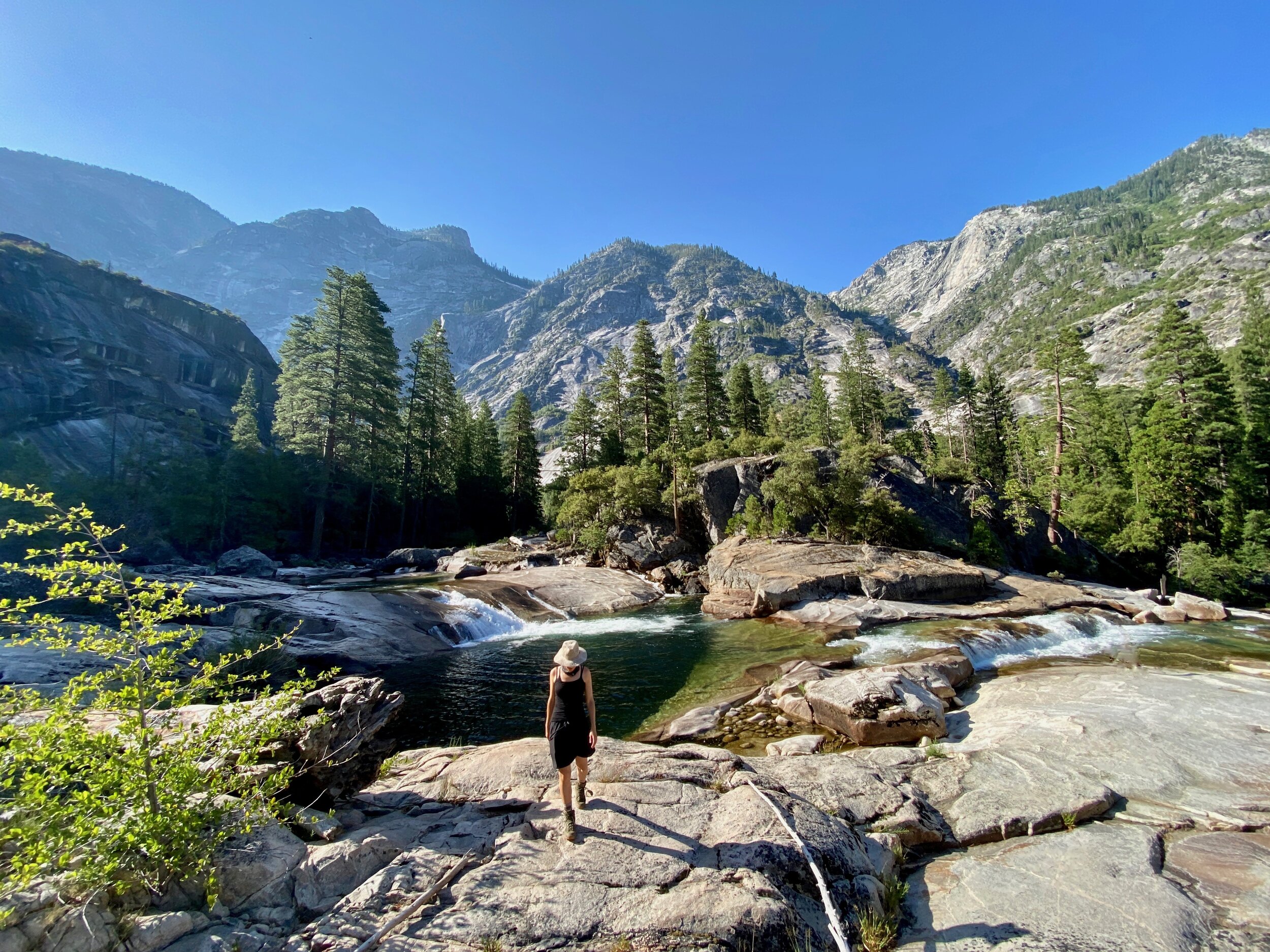
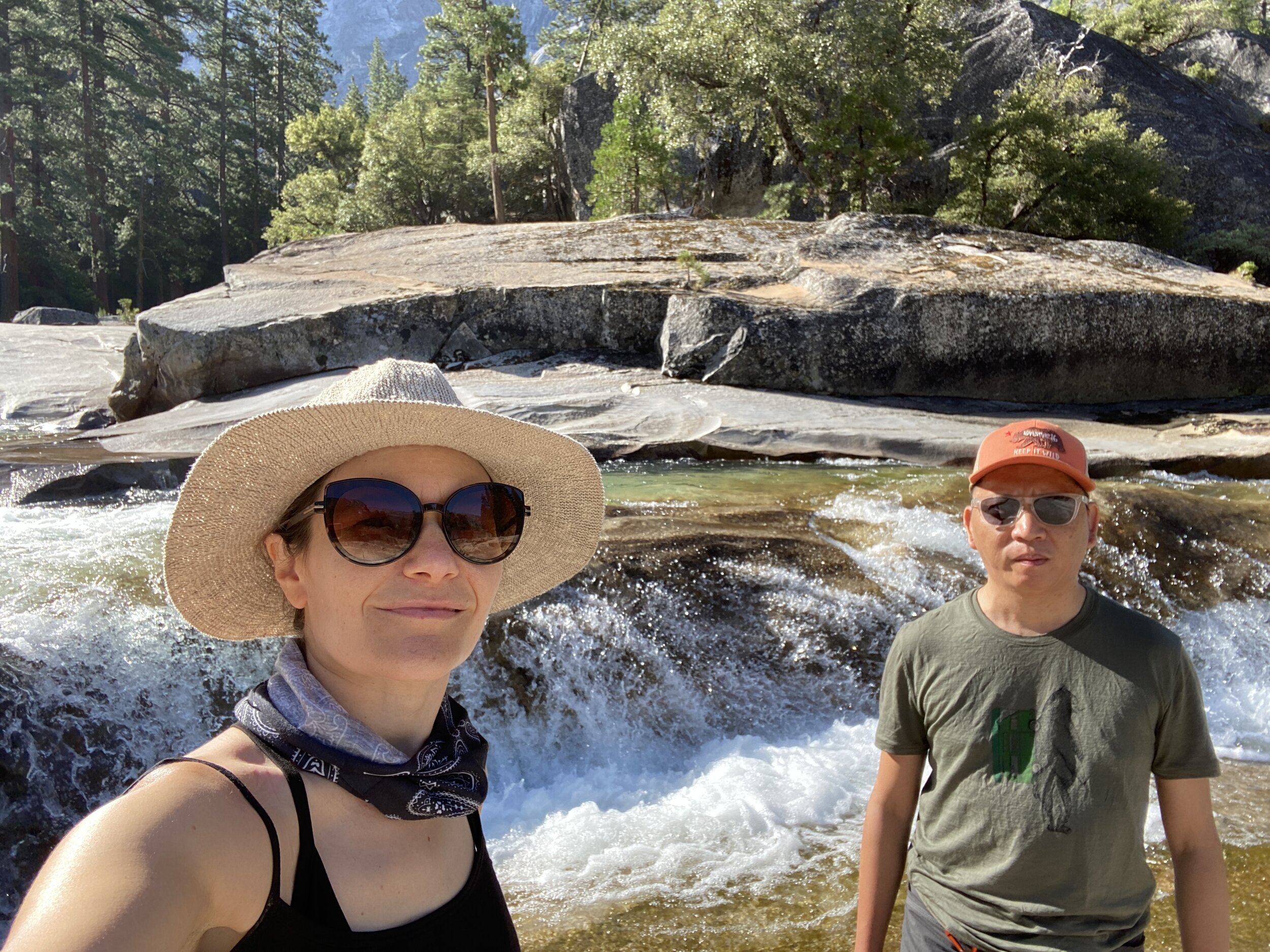












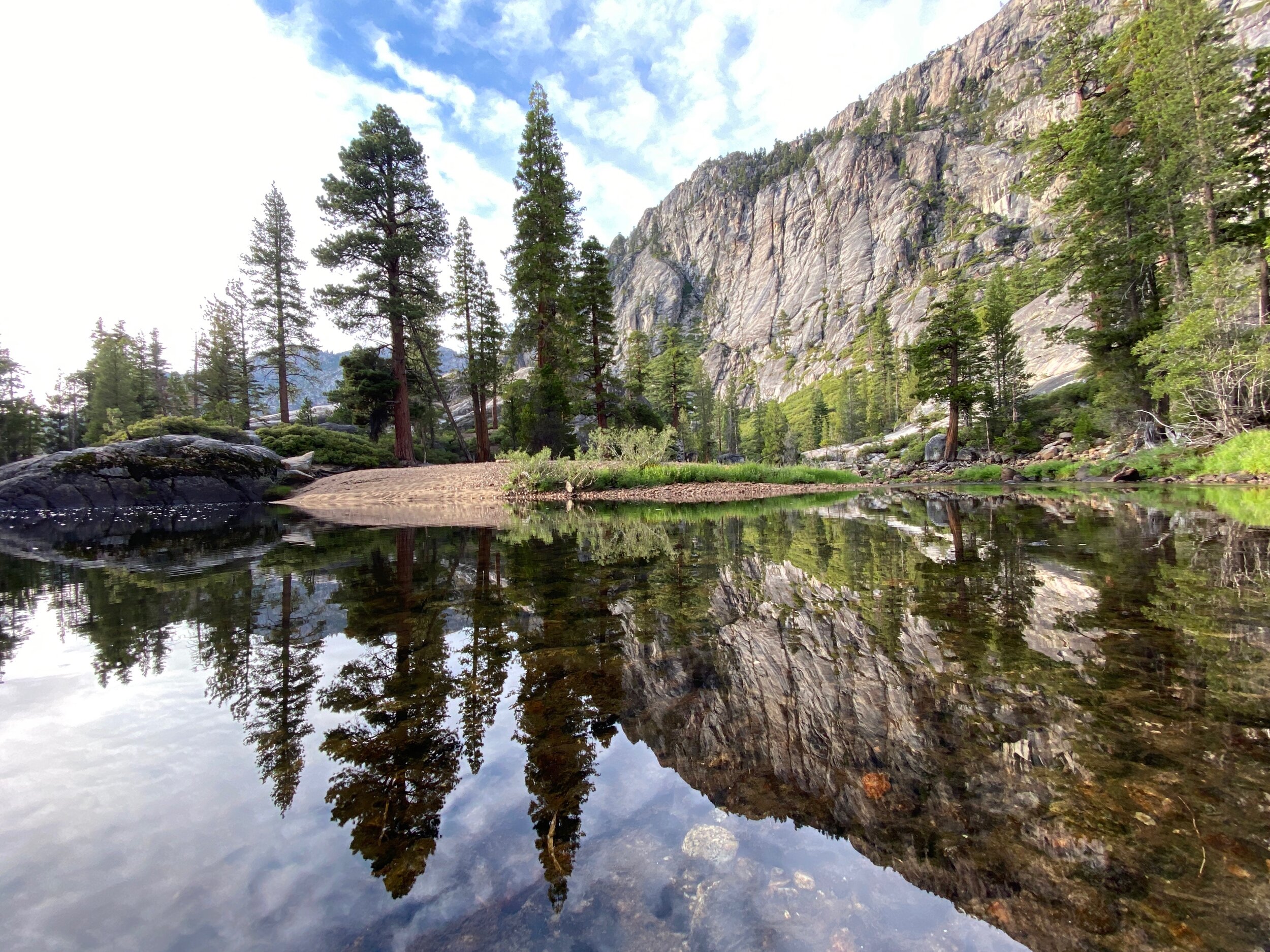
Day 3: Waterwheel Falls to Tuolumne Peak (11 mi)
The ascent continues on the approach toward Glen Aulin, site of one of the High Sierra Camps. We parked ourselves opposite the river from Glen Aulin, near its dramatic waterfall White Cascade, and had an early lunch. We did some laundry and chatted with a lone Pacific Crest Trail hiker who seemed pleased to have someone to talk to (the few intrepid PCTers on the trail this year were mostly north of Yosemite by now). Leaving Glen Aulin we joined the PCT and continued our upward journey, passing pretty McGee Lake and walking under tree cover for the next several miles. Clouds had been accumulating since early afternoon, and by about 2:30pm it began to rain, and then hail, on and off for the rest of the afternoon. Turning northeast onto Ten Lakes trail, we started our final ascent for the day, which would land us at the highest elevation on this route, at about 10,000 ft., near Tuolumne Peak. Dropping slightly to a small tarn, we entered territory with a distinct High Sierra flavor — an elemental combination of granite, high-elevation vegetation, and sky. Frolicking in this idyllic landscape were several pikas — which we had seen on several hikes before, but always in a quick, passing moment as they scurried away behind a rock. Here, near Tuolumne Peak, they lingered and seemed rather fearless, letting us observe them while they gathered tasty vegetation for their winter stockpiles and nourished themselves over nutrients seeping from rocks. We were very pleased to call this home for the night and to wake up in this wonderland for Jolly’s birthday.









Day 4: Tuolumne Peak to Ten Lakes (7.5 mi)
A late-July Sierra hike is a Jolly birthday tradition in our household. Today’s was the big day and we were determined to have an easier day today. Leaving the lovely Tuolumne Peak area, we climbed slightly and then switchbacked down while taking in views of Cathedral Canyon, reaching the South Fork of Cathedral Creek, the lowest elevation of the day. Here we took a long and lazy lunch complete with a nap under a tree. Leaving the canyon we once again found ourselves climbing and gaining more and more views to give perspective over the terrain we had covered during previous days. Though the entire trail along this 50+ mile route is well engineered and maintained, this particular stretch of trail was downright gorgeous, with beautifully-crafted rockwork that made us ponder whose artistry we were enjoying and how long it had been there. With the slope easing, we found ourselves walking in the forest again, reaching the first and largest of the Ten Lakes and finding a suitable spot to call home for the night. A gentle evening rain fell and the skies cleared overnight.


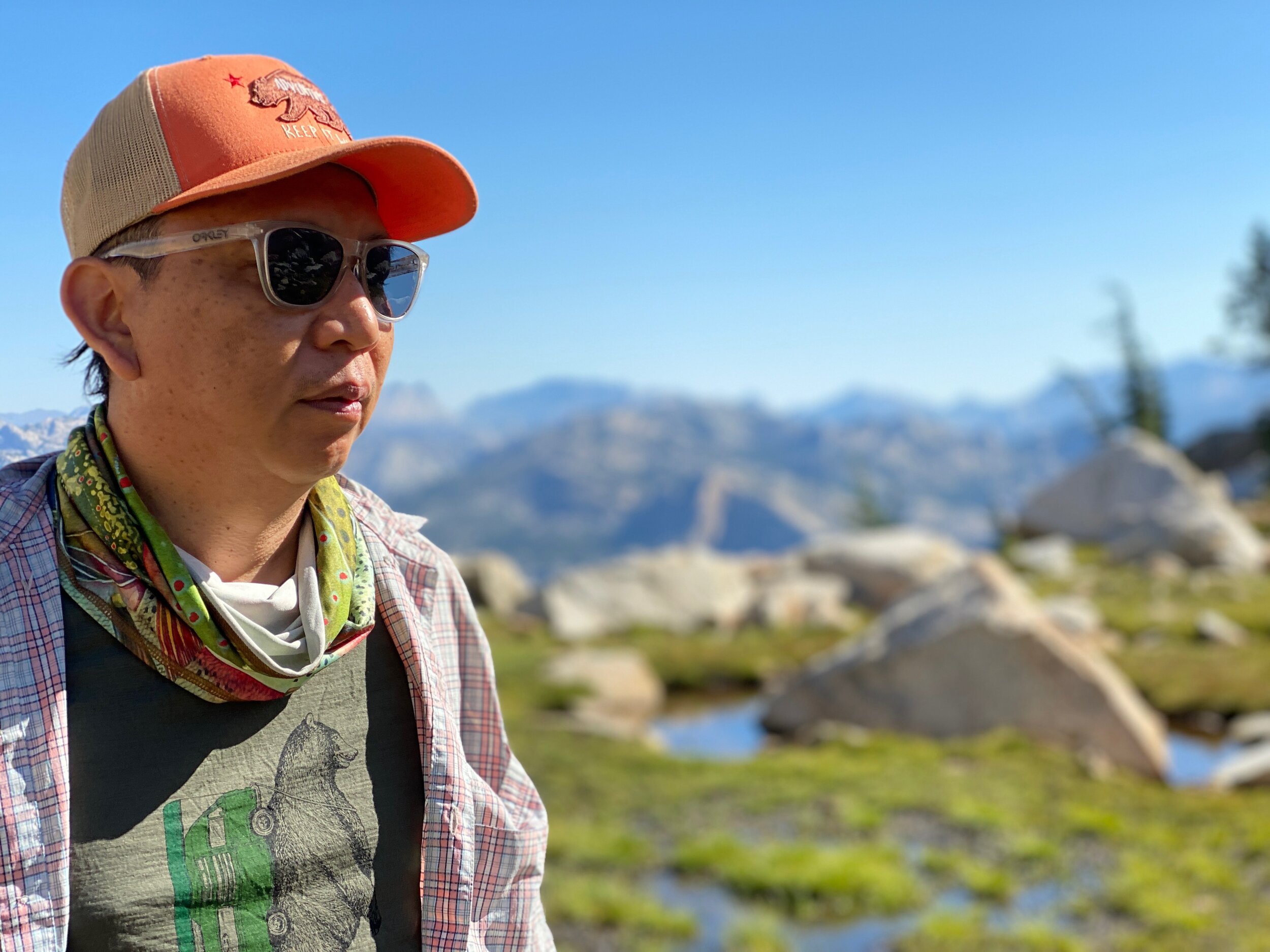
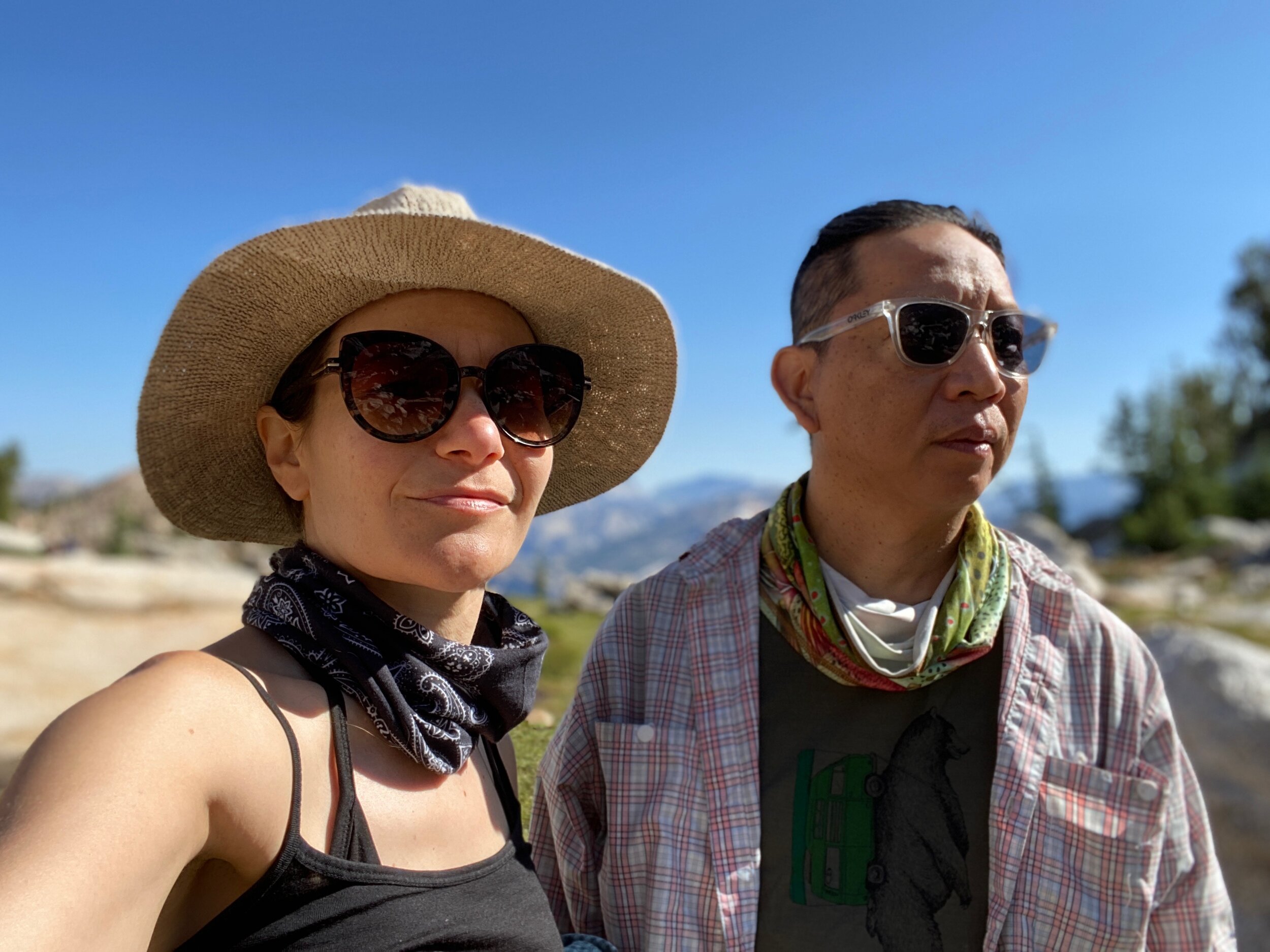

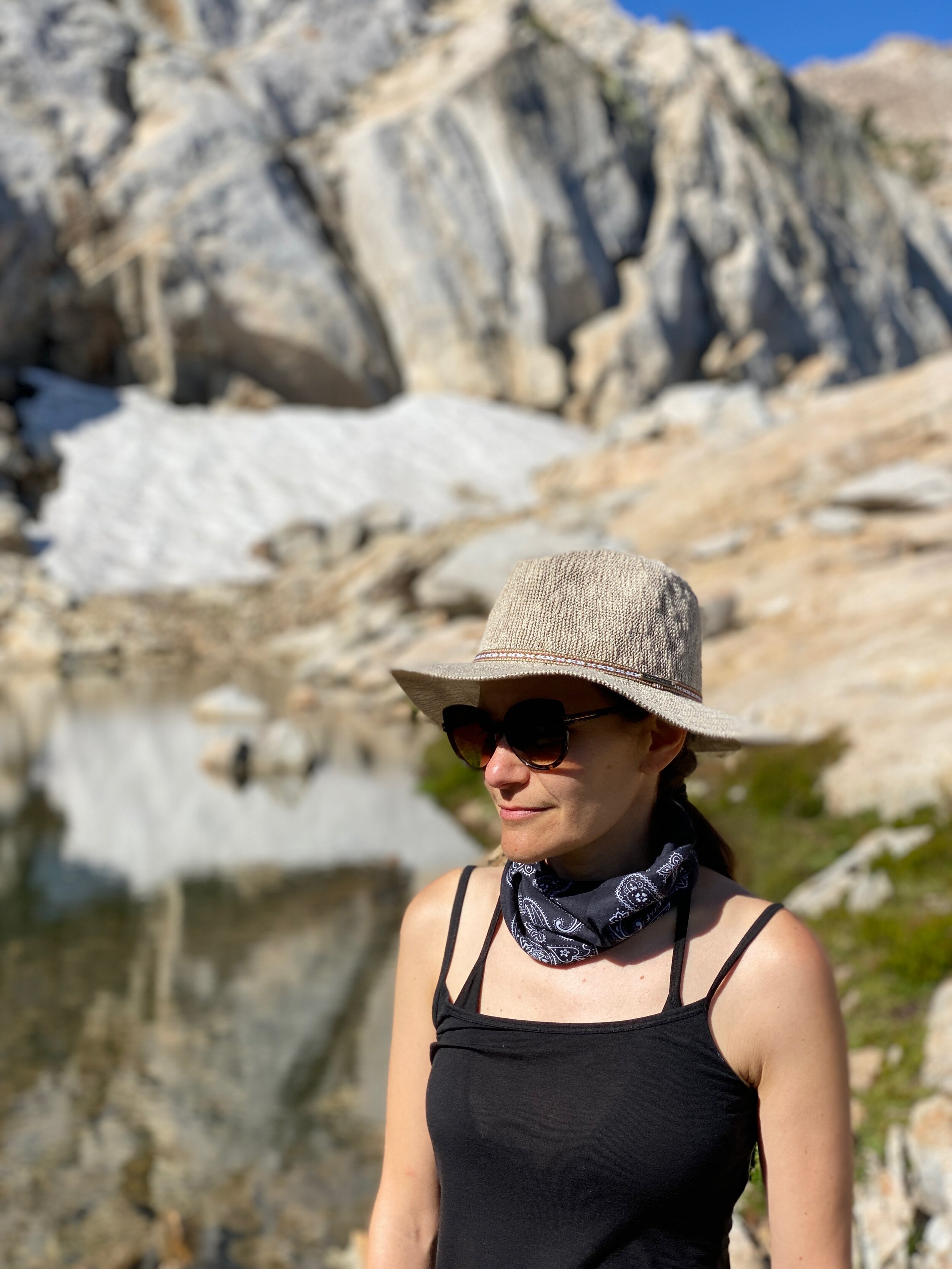
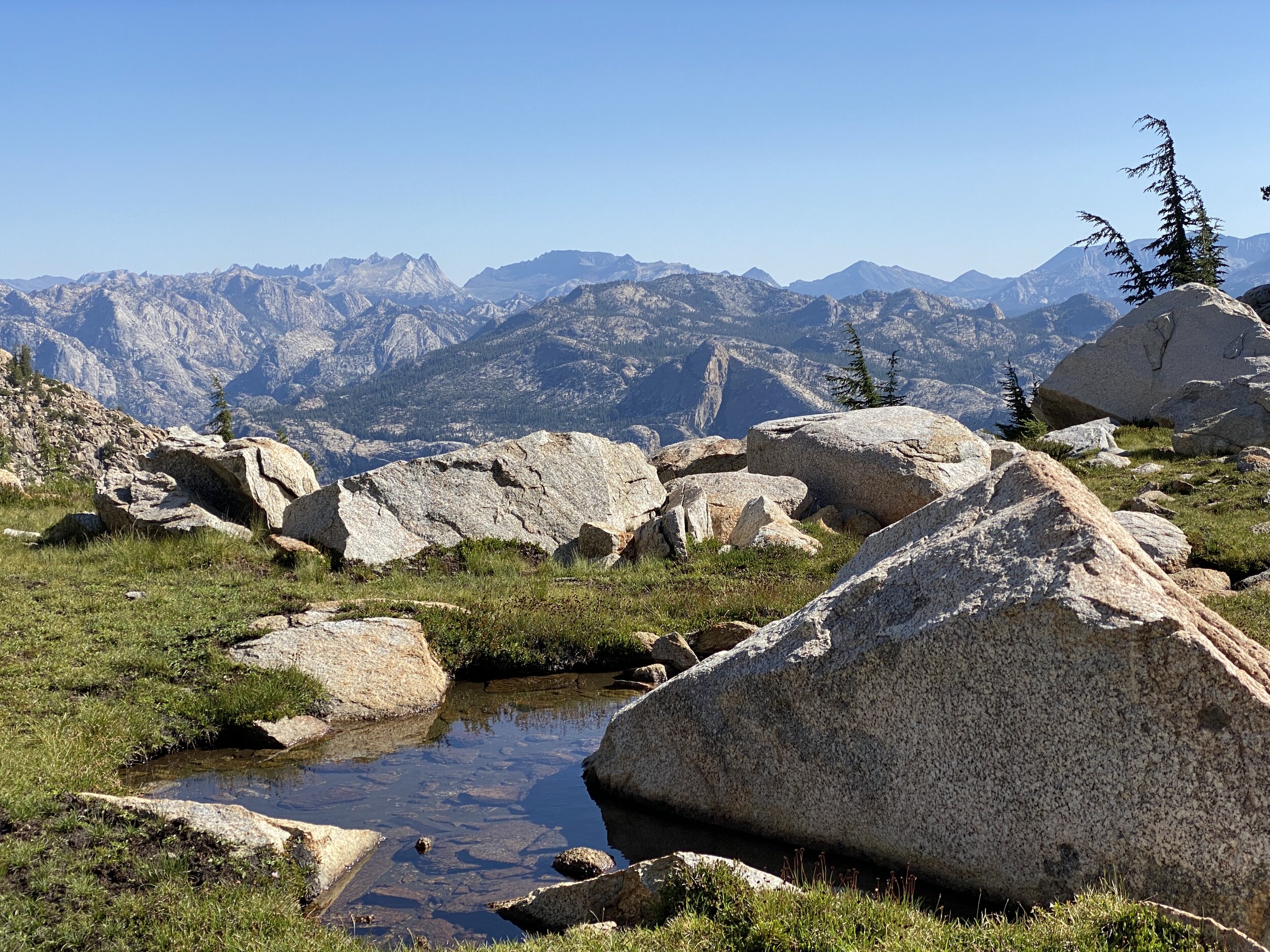








Day 5: Ten Lakes to White Wolf (13 mi)
From the largest, easternmost lake, we descended toward two of the other accessible lakes in the grouping and then found ourselves climbing again, this time toward Ten Lakes Pass — a broad, wildflower-covered ridge that affords 360-degree views of this beautiful land. We descended for the following few miles, passing Halfmoon Meadow and more bear scat than we’ve ever seen in our lives. It seemed every couple of minutes there was evidence that bears had recently taken the same trail we had — but they must have not been feeling very social because we did not see any bears. Leaving Ten Lakes trail and heading west we climbed gently under heavy tree cover, passing a junction with Lukens Lake trail before finally reaching White Wolf. Another 1.1 miles’ walk up White Wolf Road and we reached Highway 120, completing a challenging and rewarding adventure replete with varied habitats and destinations to tickle the senses.



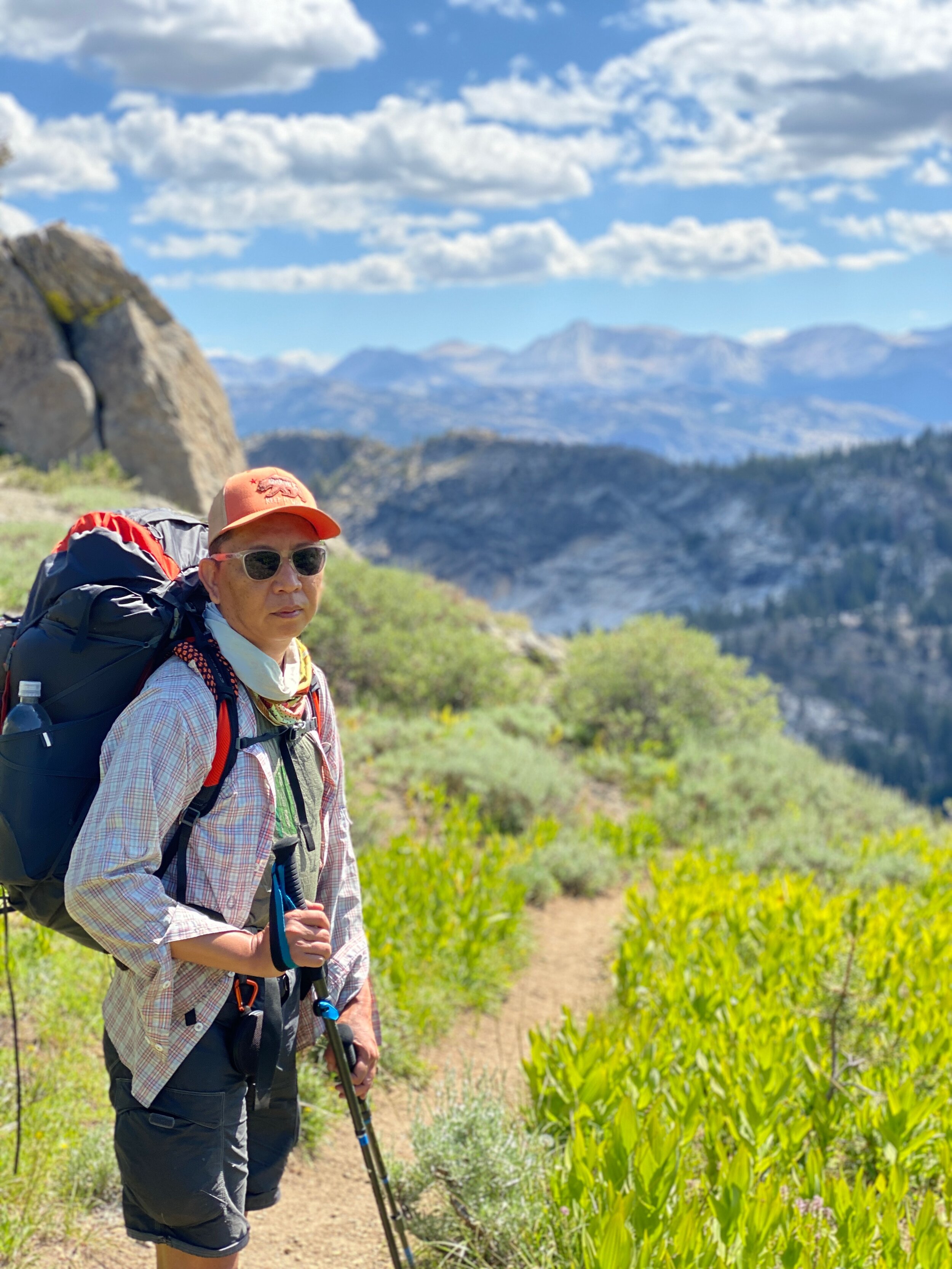



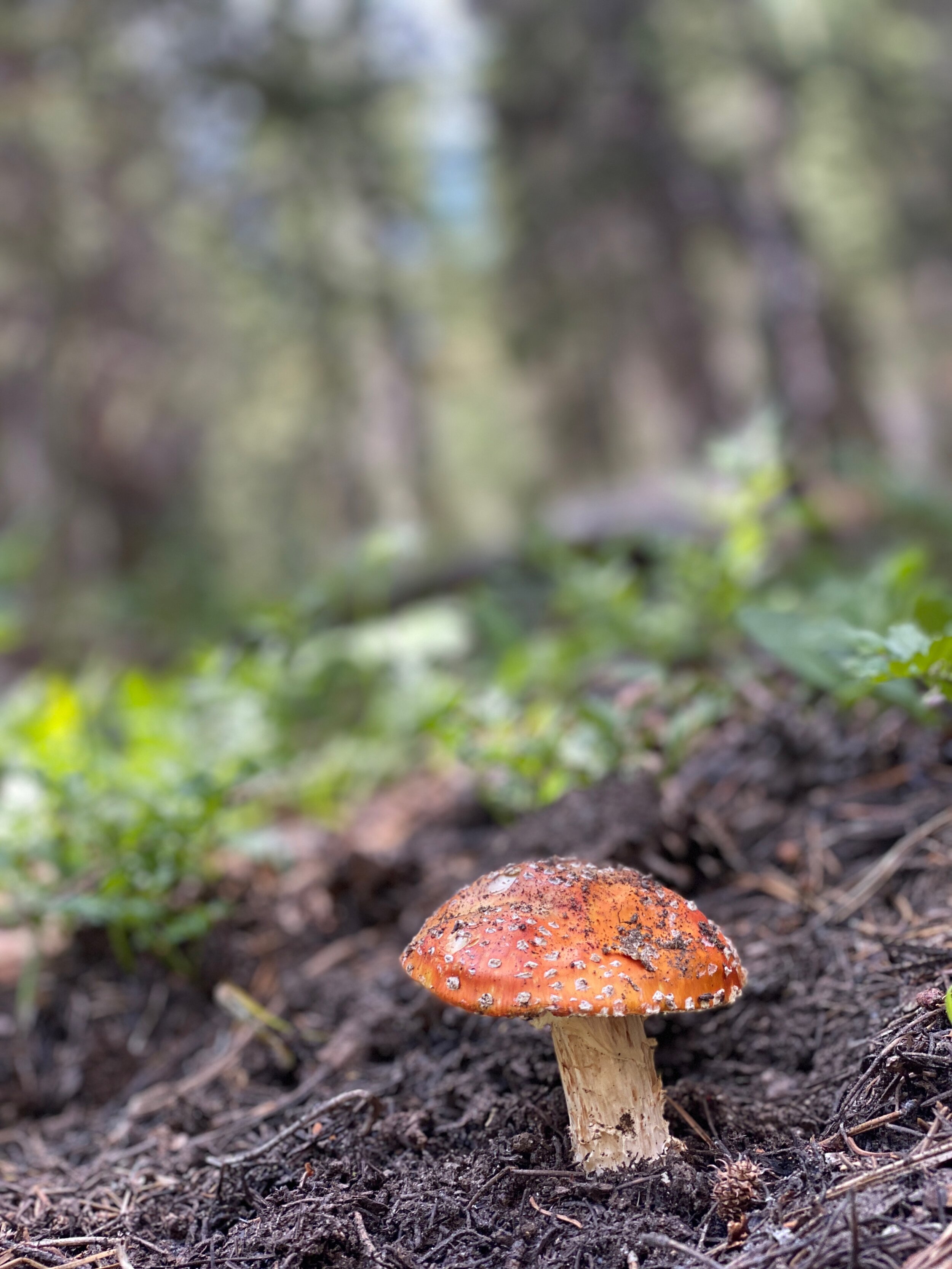




Old Big Oak Flat Road to El Capitan
In summer, we generally avoid going near Yosemite Valley because it tends to be quite overcrowded. But with visitation down this year, we decided to take on a fairly easy trail and soak in some of the Valley’s sights by hiking along the rim above it.
Day 1: Old Big Oak Flat Road to Cascade Creek (4 mi)
We started our hike around 5:30pm to avoid the heat. The heat was still rather oppressive, owing largely to the lack of shade along the first mile or two — the legacy of a wildfire that burned some 30 years ago and which left scars that are still very present today. Once under forest cover, the trail weaves its way around many downed trees while meandering in and out of drainages that were mostly dry during this low-snow year. The trail gains about 1,000 feet in the first two to three miles and then drops down to Tamarack Creek, a pretty area with oversized vegetation and inviting pools of water. Continuing on about another mile we reached an old road and turned right toward Cascade Creek — a stunning spot with a sturdy footbridge, towering trees, and a gully of cascades and pools that opens up just enough to reveal views just above the Valley. This was the only area that we saw that was really suitable for camping, and was to be our home for the next two nights.
Day 2: Cascade Creek to El Capitan and back (13 mi)
We packed a light pack and set out for a day hike that would cover some 4,500 feet of elevation gain and loss. The trail remains largely forested and gnat-filled, with many downed trees and sometimes strenuously steep sections. Little water was available during this dry year, except at Ribbon Creek. After several miles of ascent and limited views out of the thick tree cover, the trail turns south to reveal El Capitan Gully and the back of El Capitan itself. After miles of heavy forest cover, you reach the crown of one of the world’s largest monoliths as each step opens up more views to the west, south, and east. Half Dome and Yosemite’s other famous features seem within reach — but from a new perspective. We spent a good hour lunching and salivating at the views before returning to Cascade Creek for the night.
Day 3: Cascade Creek to Old Big Oak Flat Road (4 mi)
We left camp around 8:30am and when arrived back to the trailhead around 10am the heat was already beating down. We contemplated the good work of a California Conservation Corps crew that we had seen a couple of days prior, and appreciated all of the trail clearing and cutting back of vegetation these young women and men did so we could enjoy the trail that much more (the CCC’s motto doesn’t beat around the bush: “Hard work, low pay, miserable conditions”). We drove down to the Valley and soaked our feet in the Merced River before leaving Yosemite with a pile of new memories.
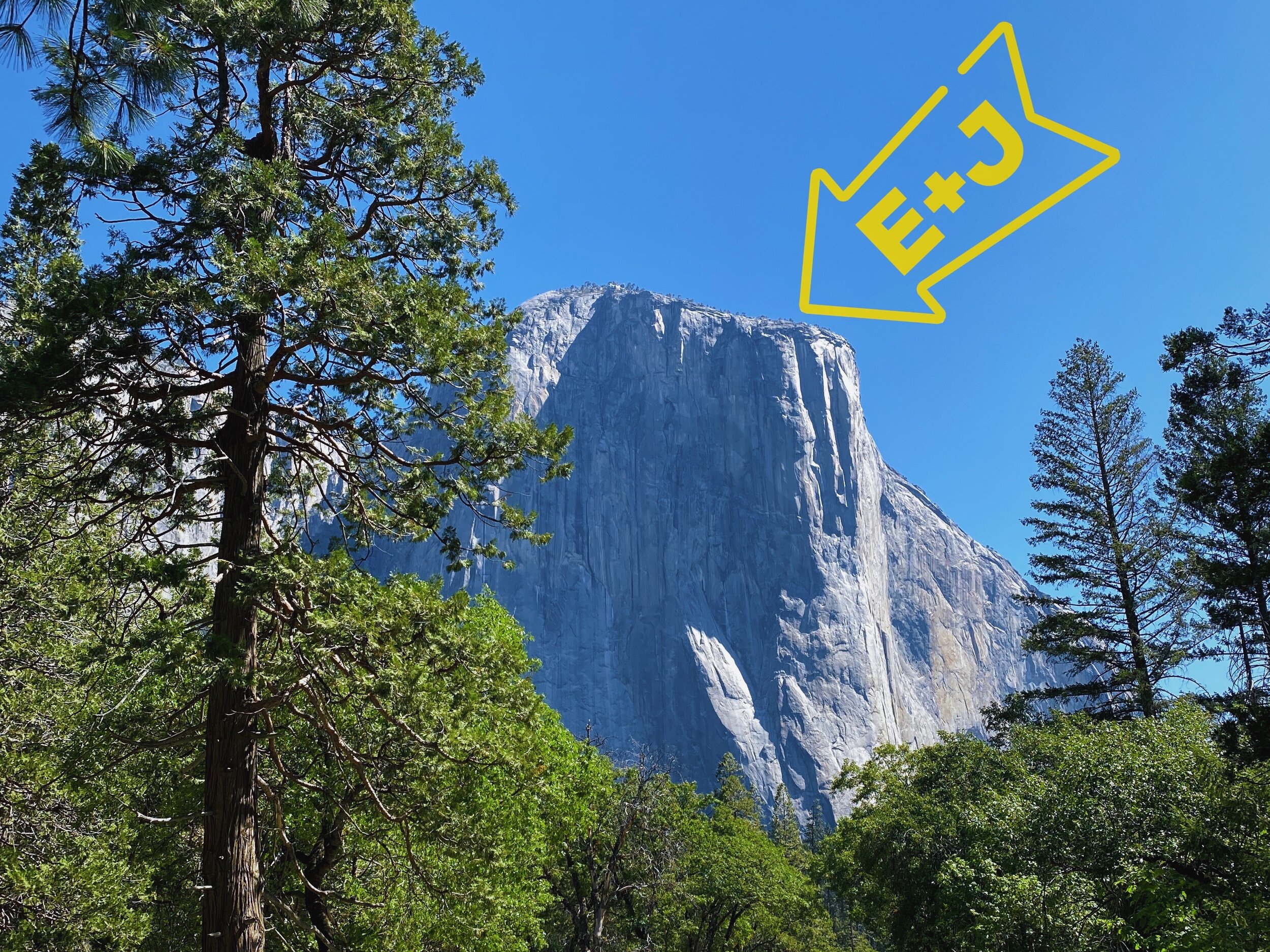




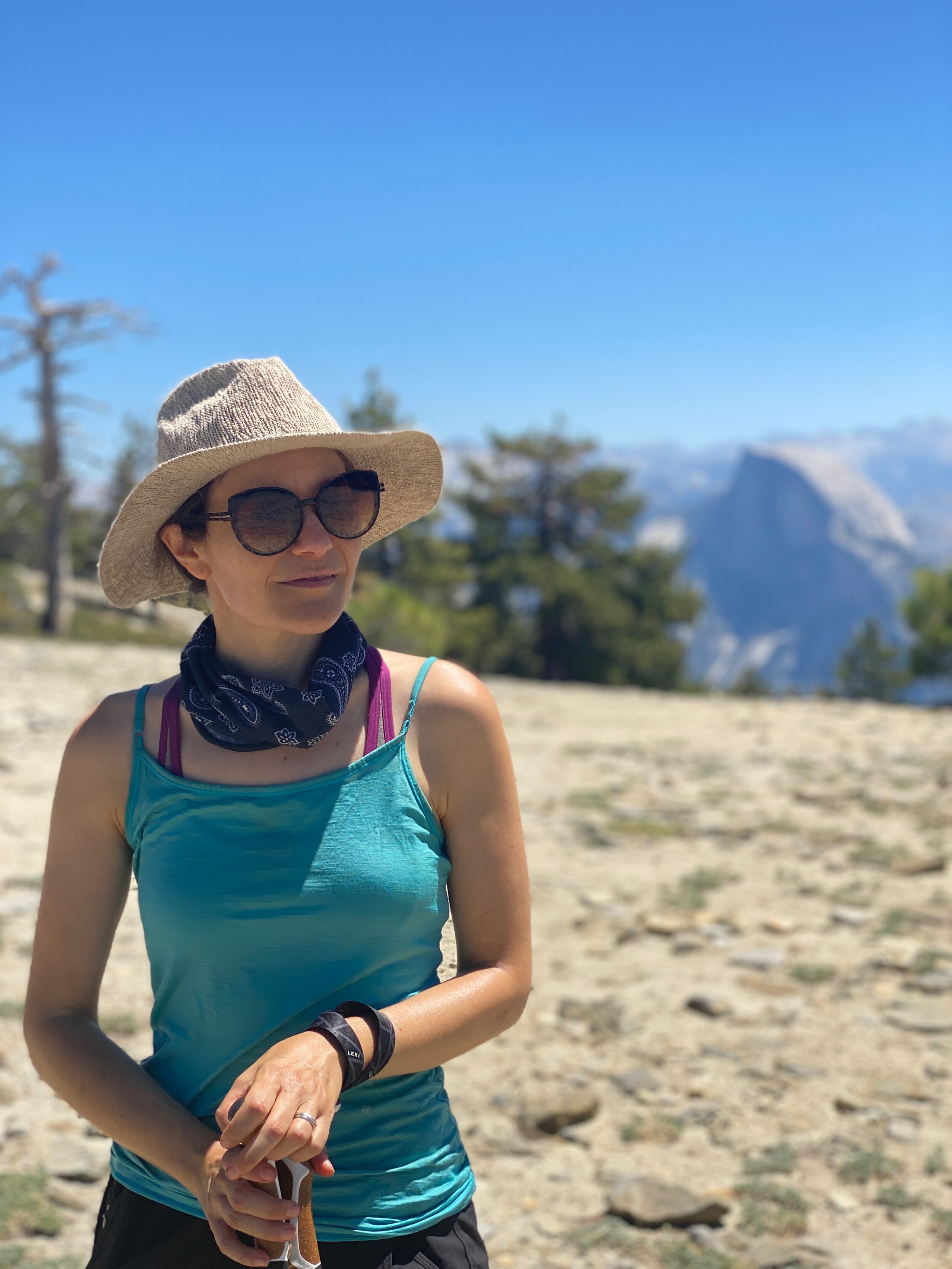
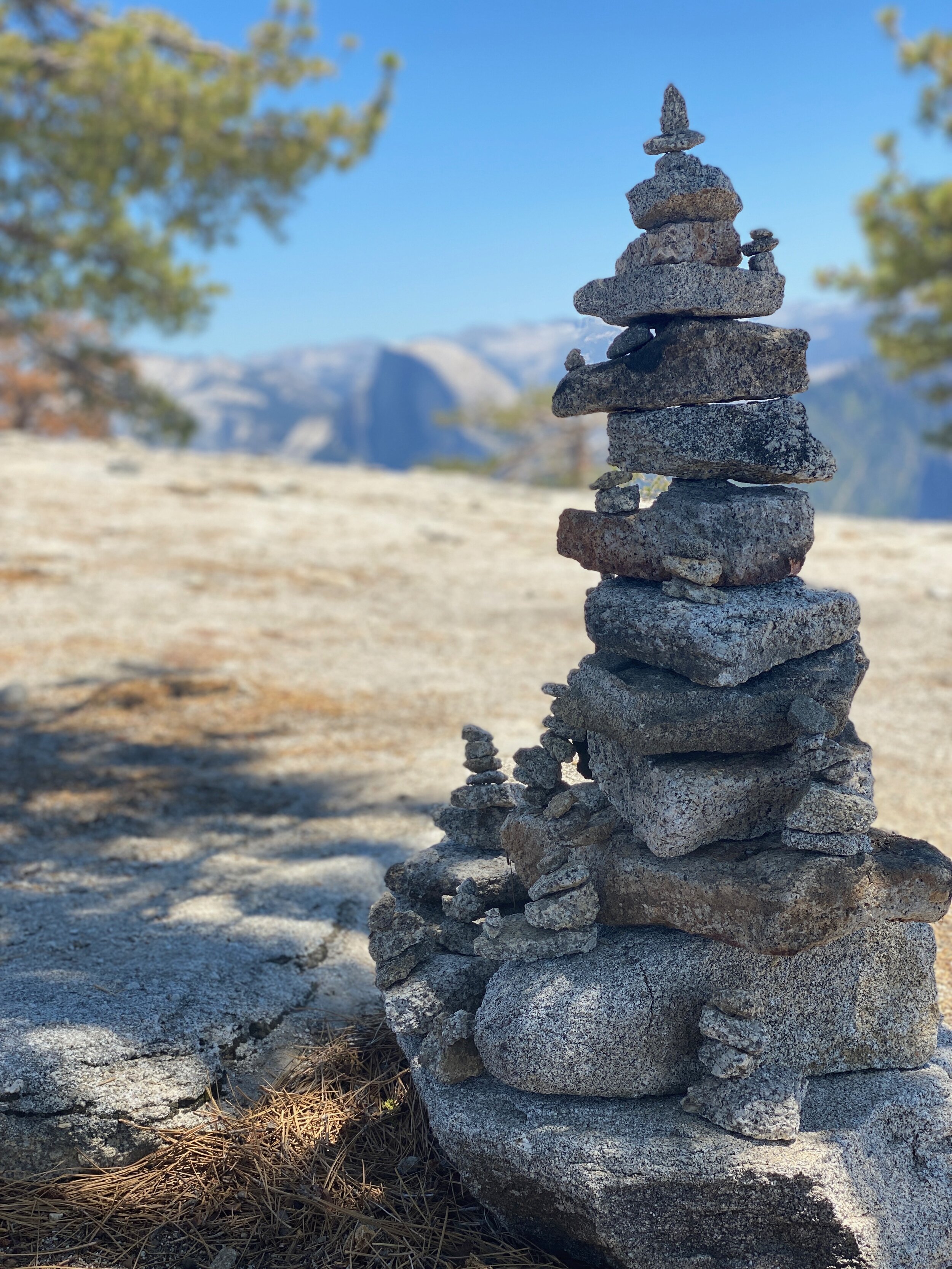


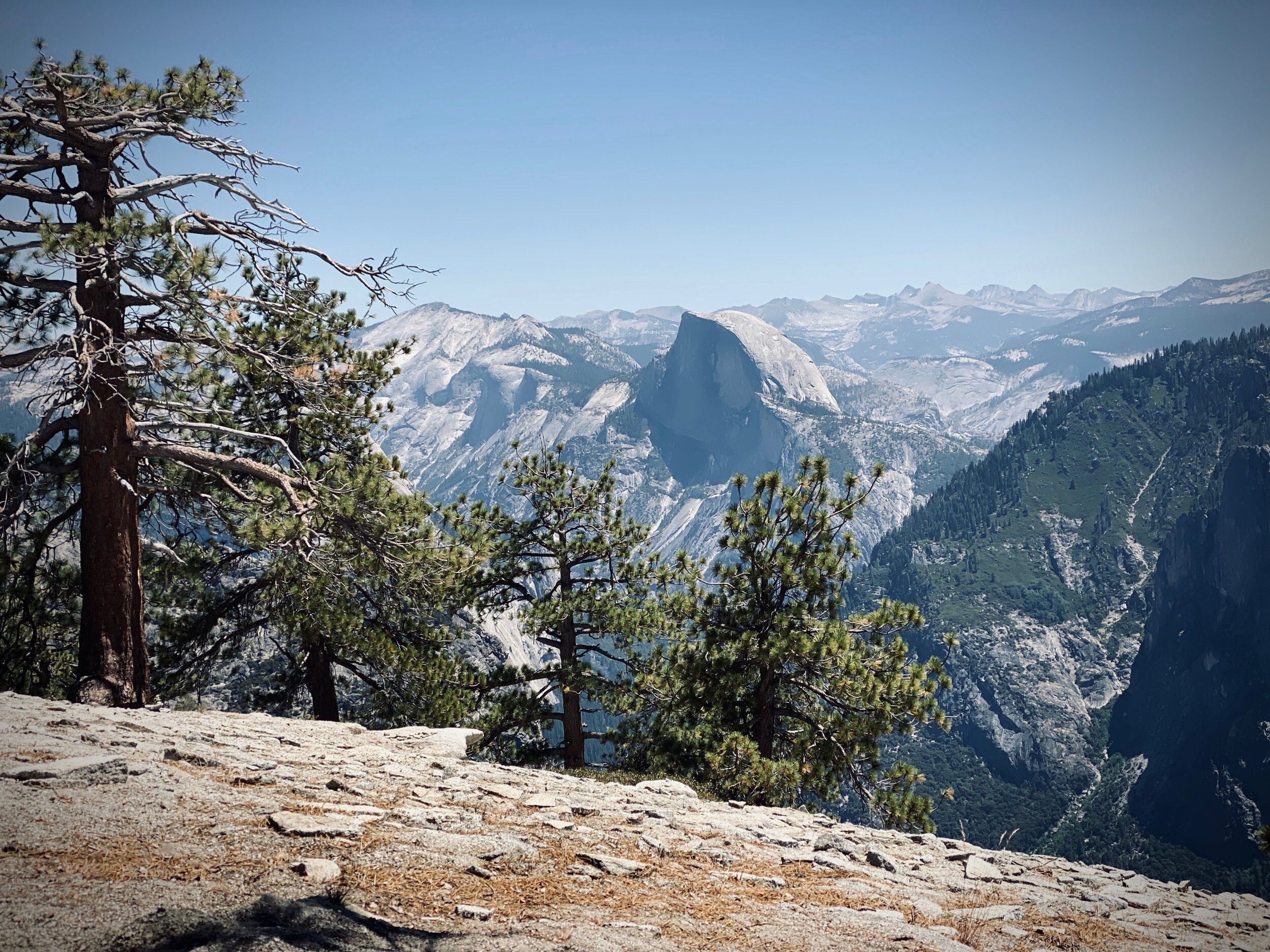


Miscellaneous Details and Recommendations
Permits: Normally, 60% of Yosemite’s backcountry permits are reservable in advance and 40% of permits are available as walk-ins starting 11am the day before the hike. This year all were reservable in advance due to the pandemic.
Weather: Be ready for all weather, anytime of year. Though there was little snow to speak of this year (see our South Lake to North Lake post to compare what the end of July looks like in a heavy snow year), dramatic afternoon thunderstorms are common in the Sierra during summer. Though usually short, they can continue on-and-off for hours and can dump plenty of rain and hail. In lower elevations, be ready for high summer daytime temps (90s are common).
Maps: Tom Harrison and National Geographic maps are available for Yosemite. Free PDF downloads of USGS Quads are available through National Geographic. And of course there are tons of apps you can use, but those don’t replace the type of map that doesn’t require battery.
Bears: Hiking in bear country means that use of bear canisters is mandatory. You can rent or buy canisters from many outdoor outfitters, or you can rent one in Yosemite for a nominal fee.
Campfires: Normally, Yosemite NP allows wood fires in existing fire ring below 9,600’ unless there are additional fire restrictions due to drought or other conditions. This year the park was under Stage 2 fire restrictions, meaning no fires are allowed in the backcountry. Layer properly and don't even think about having a campfire.
Leave No Trace: This leads to a good reminder to practice Leave No Trace principles whenever you find yourself exploring wildernesses near and far, especially in this age of increased wilderness usage and easy social media sharing and finding of pristine destinations. Nobody wants to discover a smudged patch of “Sierra white flower” (aka used toilet paper) while communing with nature. Pack it in, pack it out — and heck, bring an extra trash bag with you and pick up bits of garbage along your journey on the way! With a shared stewardship ethic, we'll be fortunate to continue enjoying our public lands and leave them better than we find them for future generations.
Yield to uphill hikers: Just do it. And root for them while you’re at it!






